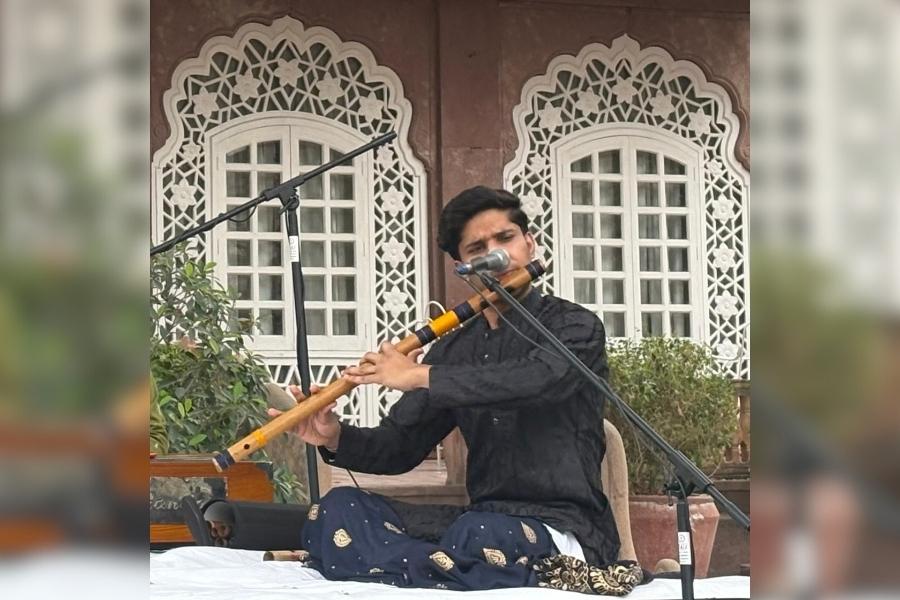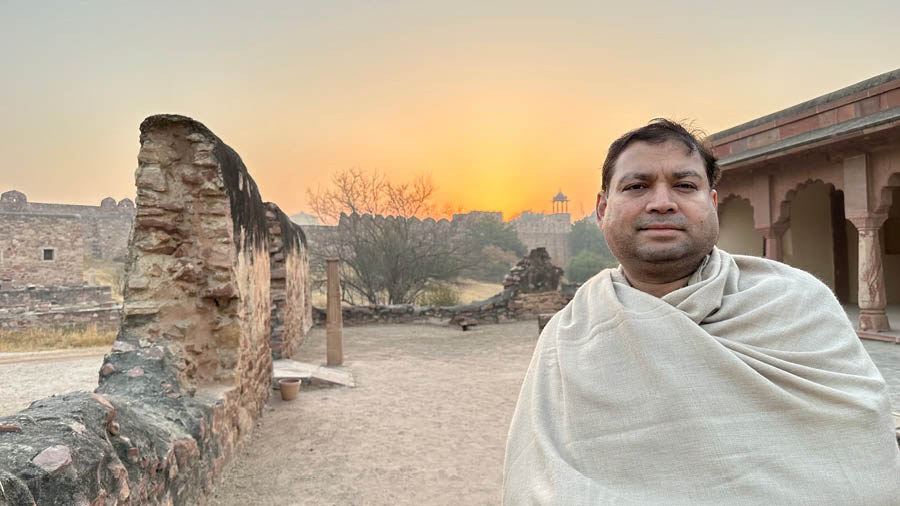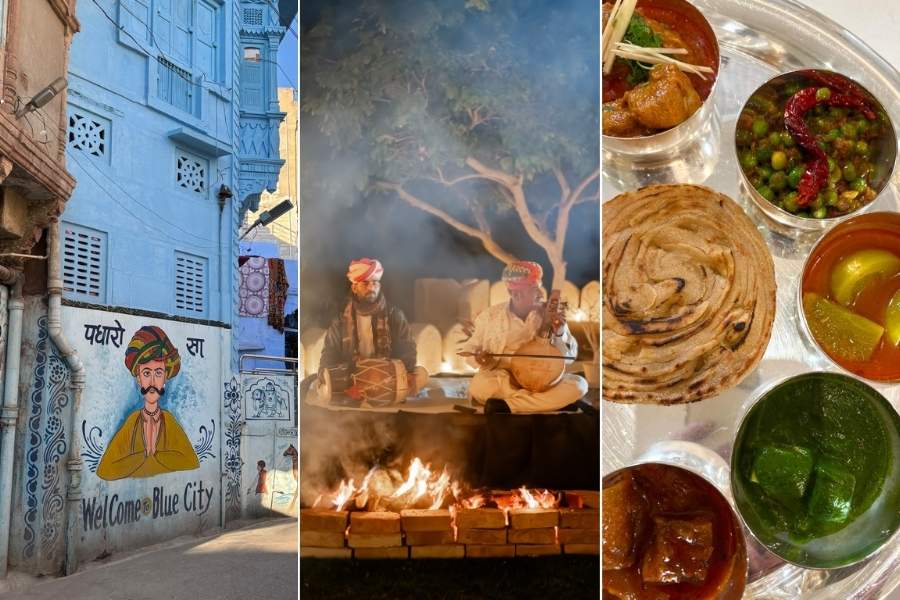Ustad Nawab Khan and I cooked up the idea of a raga retreat last summer. Our aim: keep it simple, get to the heart of the matter, tell the raga story. This February we welcomed guests to our first ‘Raga Science Experience Retreat and Music Festival’. It exceeded all our expectations thanks to the location and the quality of musicians.
The location needed to be just right, offering both intimacy for the music performances and multiple spaces for private relaxation in between them. We took over Pal Garh, a well-run fort-palace hotel, moments from Jodhpur in western Rajasthan. Its guest rooms surround a big central courtyard with mature trees at either end – two natural stage sets ideal for our needs. Its vibe is calm and gentle. Behind the fort, the curious can seek out the old village with its shepherds and the hotel’s 13-acre organic vegetable garden. Owner Mahesh Karan Singh and business partner Nishal Gautam – who spent a decade at multi-award-winning Raas hotel in Jodhpur old city, so he knows his job – oversee the 23 rooms, home-recipe meals and guest wellbeing.
This, then, was our setting for thought-provoking raga music, poetry and paintings, a programme created by Nawab Khan, ninth generation of the Jodhpur gharana. He and his remarkable family of musicians – more than one hundred when all the cousins are counted in – live and breathe music.
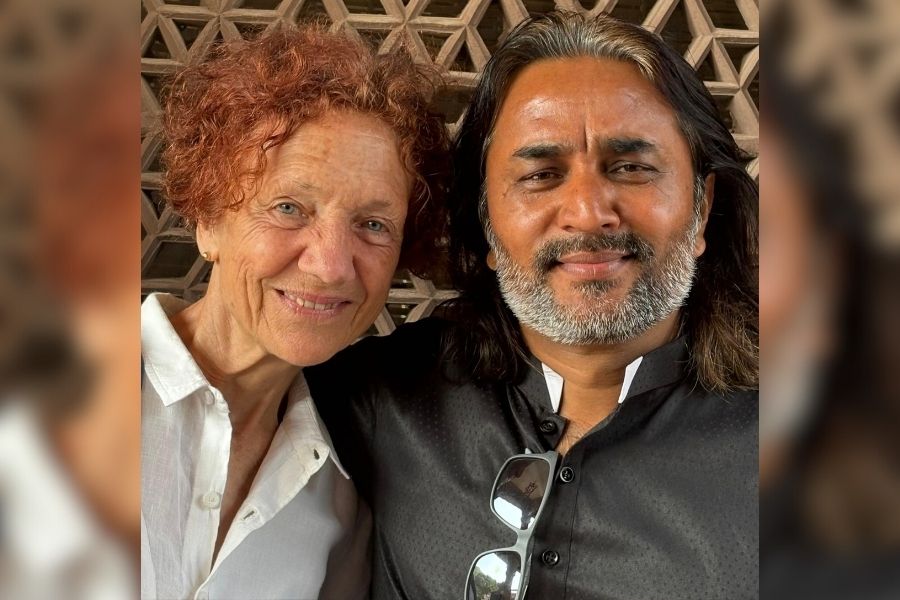
Louise Nicholson and Nawab Khan, co-hosts of the retreat
Thanks to the esteem in which he’s held, Nawab gathered impressive musicians from across India to tell the story of the raga. To kick off the festival, we met beneath a tree at teatime where Nawab set the mood, playing with his nephew Shaizan Khan a short version of the soulful evening Raga Hansadhwani. Shaizan plays bansuri, a side-blown bamboo bass flute which sharp-eyed travellers may have spotted in ancient Buddhist, Jain and Hindu temple reliefs and murals. Later, after a short talk about the chants documented in the Sama Veda, we lost ourselves in the rhythm of live chants performed by Anup Raj Purohit and his Swarangan Music Academy. The gifted 17-year-old Aijaz Khan, a tenth-generation sitar player from the Sikar gharana, whose guru was his grandfather Niyaz Ahmad Khan, played us into the night with Bhageshri, an evening raga that evokes the emotion of waiting for lovers’ reunion.
There followed two full days that flowed from one mesmerising music experience to the next, often with short introductions that helped us enjoy them even more. Highlights were meditative nada yoga led by Nawab at sunrise, a painting workshop to try our hand at a ragamala, and talks on the emotion ‘rasa’, on Amir Khusrau’s court poetry and on Sufism’s arrival at nearby Ajmer from where its music became embedded in Rajasthan culture. We also learnt from dancer Anita Parakh how kathak began as temple bhakti worship, was then adapted to become Mughal court dance and is now part of movie fusion dance; that night she performed them in sequence.
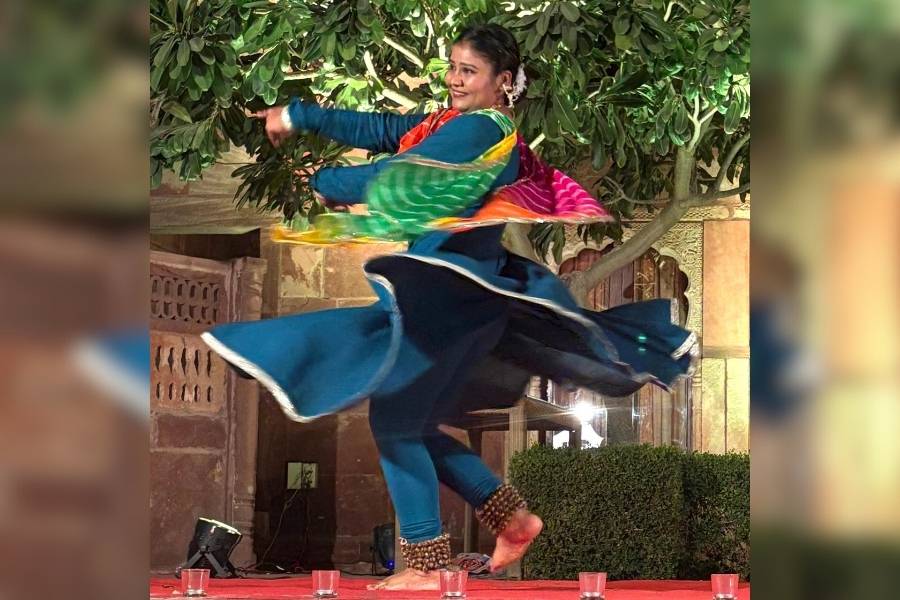
Dancer Anita Parakh performs
One night, Swarnendu Mandal and Srijanee Banerjee from Kolkata gave us terrific a jugalbandi (literally, ‘entwined twins’) on sarod and sitar, accompanied by Arunava Mukherjee on tabla. As they put it, ‘we each come from a different gharana, but we are on one journey’. Another night, Mukherjee joined Nawab’s son Naveb on santoor to give us a pure Raga Dhanasri, evoking the carefree optimism of a winter afternoon.
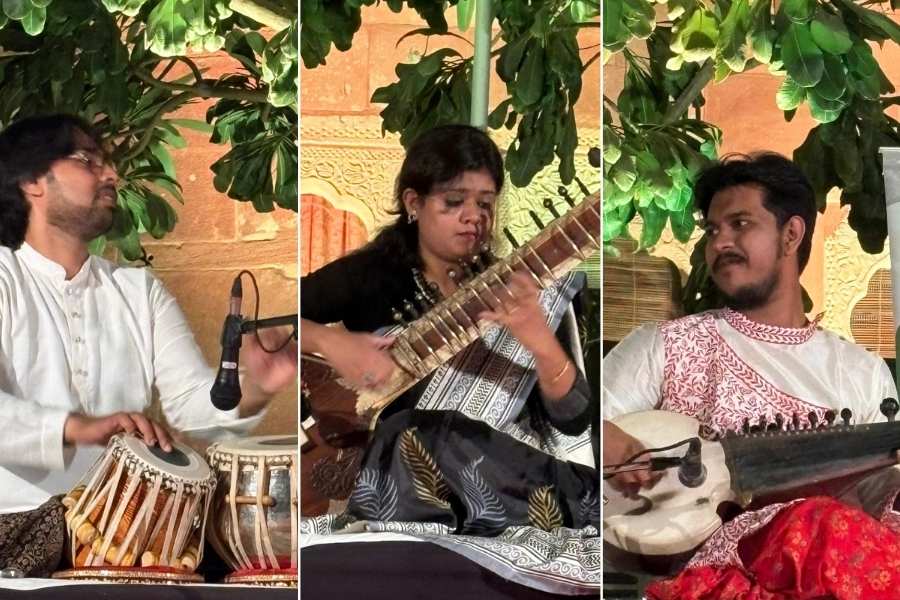
Arunava Mukherjee, Srijanee Banerjee and Swarnendu Mandal, from Kolkata, during their jugalbandi
Later that night, in total contrast, traditional Sufi qawwalis slowly morphed into a raucous Bollywood show led by the electric Imran Khan from Jodhpur (a distant relative of Nawab, of course). He continued singing at the after-party where Indian, Polish, French, German, British and Moroccan guests joined Indian musicians to dance with gusto and even helped the band playing wild Rajasthani fusion music mixing folk, classical and Sufi. Here was the raga taken to extreme, perhaps, but it felt good. There should be more of that, around the world.
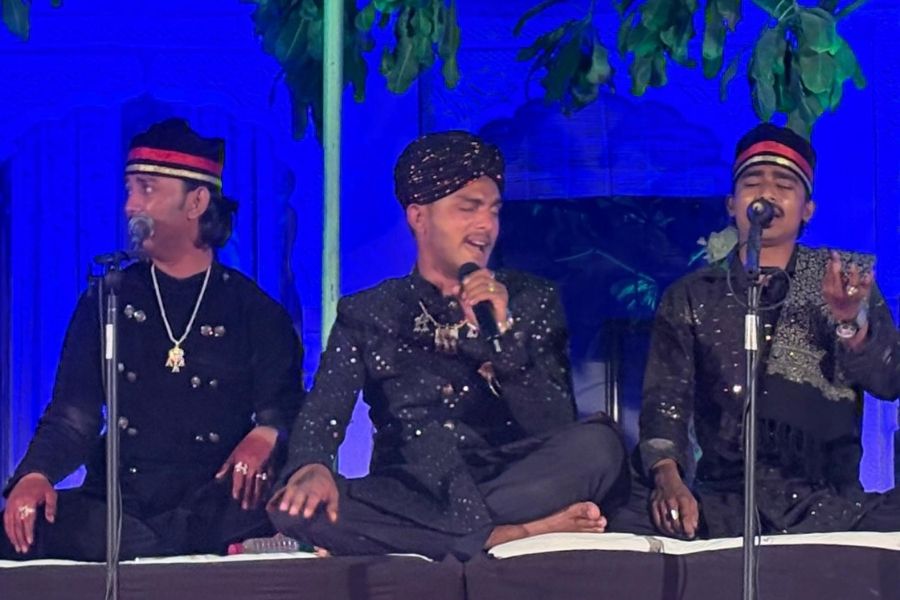
Imran Khan from Jodhpur sings traditional qawwalis
On our final day, we all drove 90 minutes west into the Thar Desert to dusty Barnama village where more than a thousand musicians live. We sat beneath the village community tree to hear men singing and playing sarangis (that they make themselves using Pakistani rosewood), the villagers crowding behind us. One man sang out, unable to help himself from joining in. Soon, half a dozen more were adding their voices, then, it seemed everyone was. It was joyful. We then visited several homes to hear full-throated singing by young boys, soft songs by odhni-covered ladies, and more. And we shared good chai.
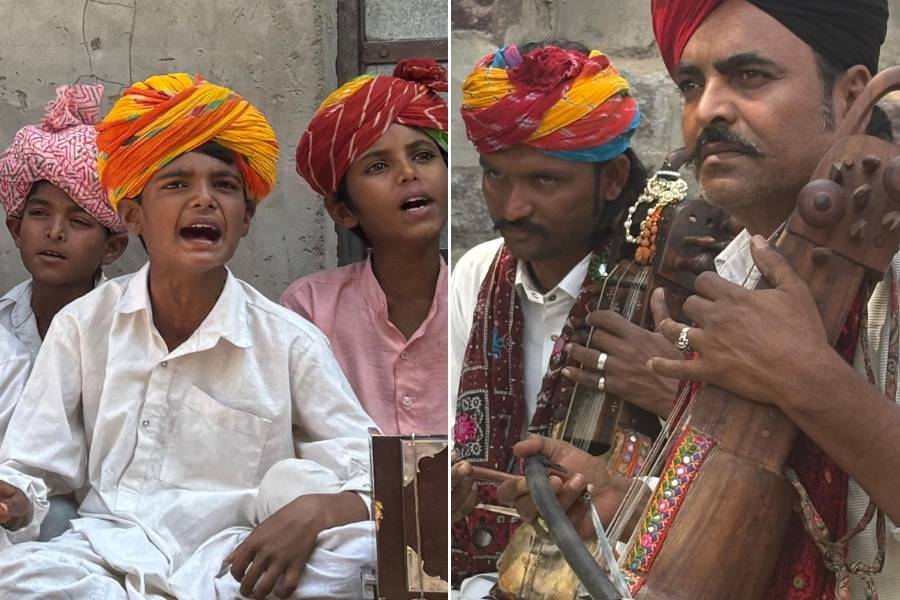
At the Barnama village of singers and musicians
Yes, we have fixed the dates for next year!
